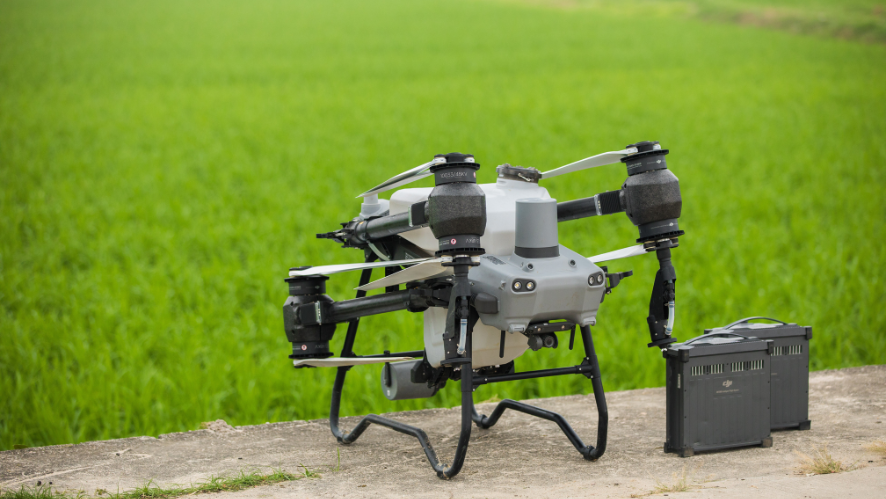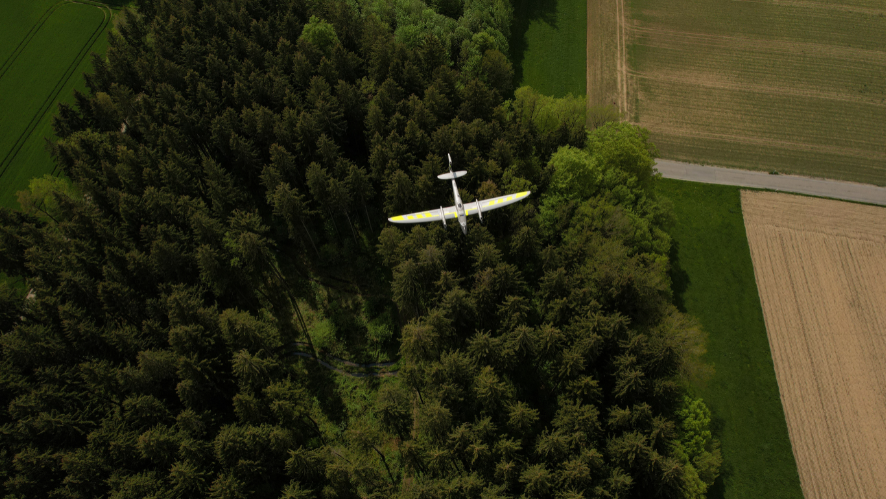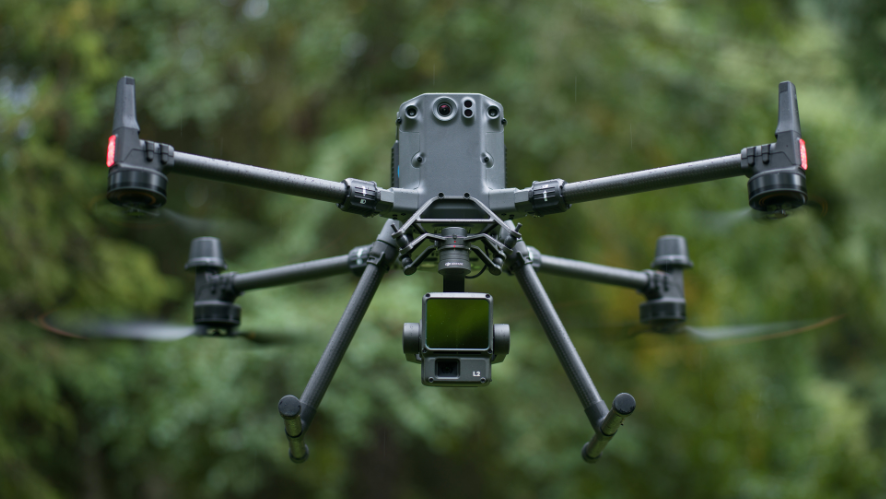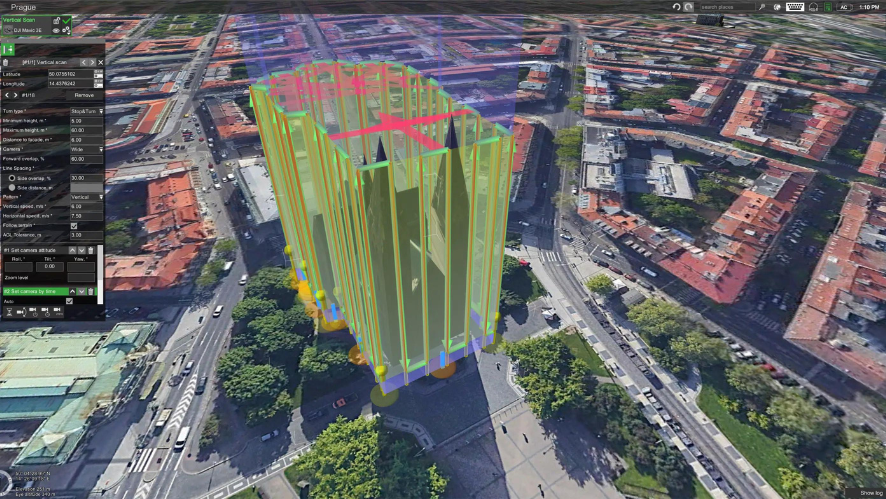PHANTOM 4 MULTIESPECTRAL
Secure the health of your business
Secure the health of your business. The Phantom 4 Multispectral is a high-precision drone with an integrated multispectral imaging system built for agricultural missions, environmental monitoring and more.
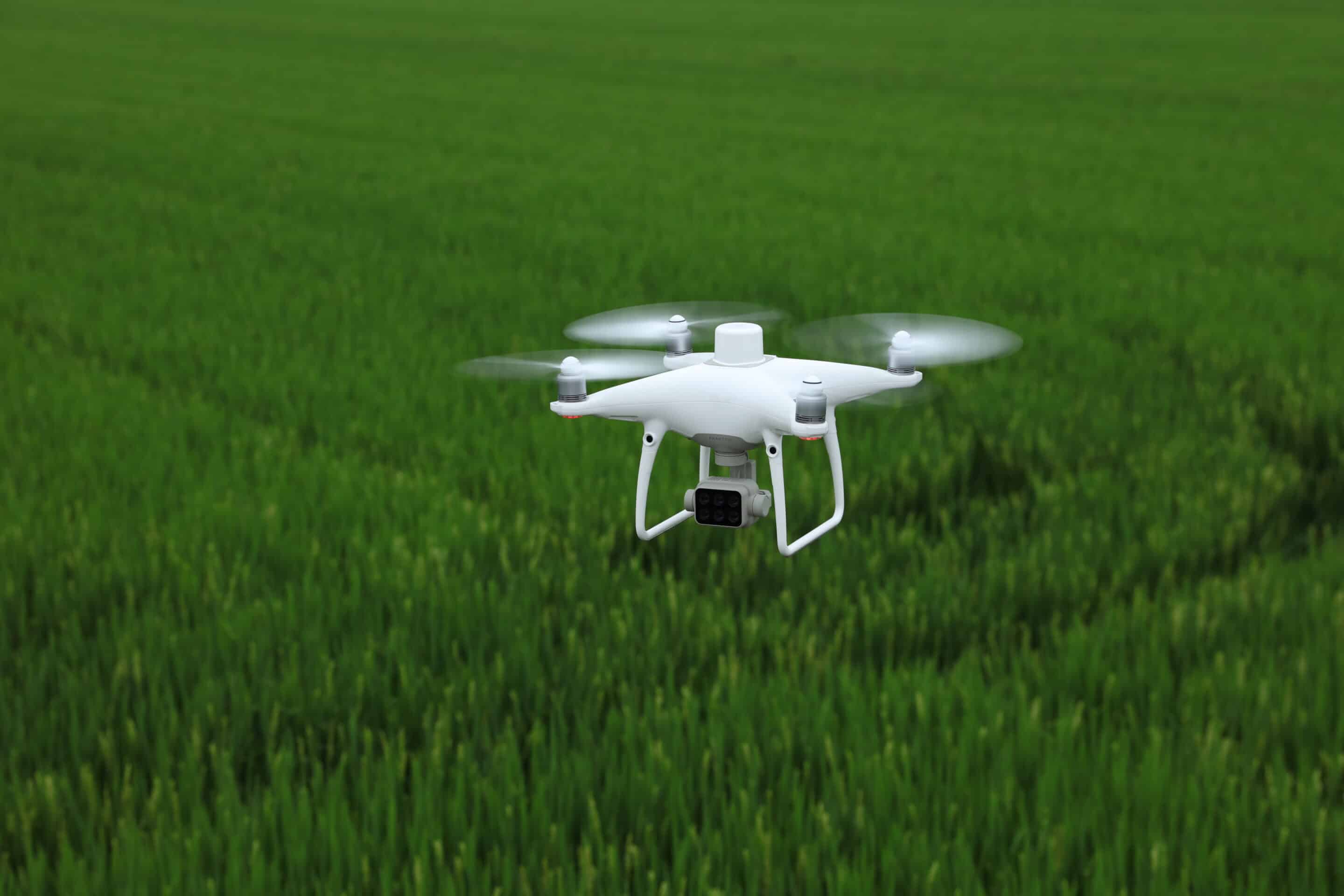
Flight planning: Plan flights, run automated missions and manage through the DJI GS PRO app (DJI’s leading flight planning app for iOS).
Data collection: Collect multispectral imagery efficiently and over large areas.
Data analysis: Easily access and process air data by applying crop-specific parameters and metrics to obtain results related to crop health.
Operate on the database: Implement targeted phytosanitary treatments using the updated NDVI and RGB map.
IMMEDIATE INFORMATION ON PLANT HEALTH
The P4M through its multispectral sensor is able to provide information on crop health and vegetation conditions. DJI created this platform with the same performance standards for which the brand is known, it has a range of 27 minutes (maximum flight time) and has a range of up to 7 km, with the OcuSync system.
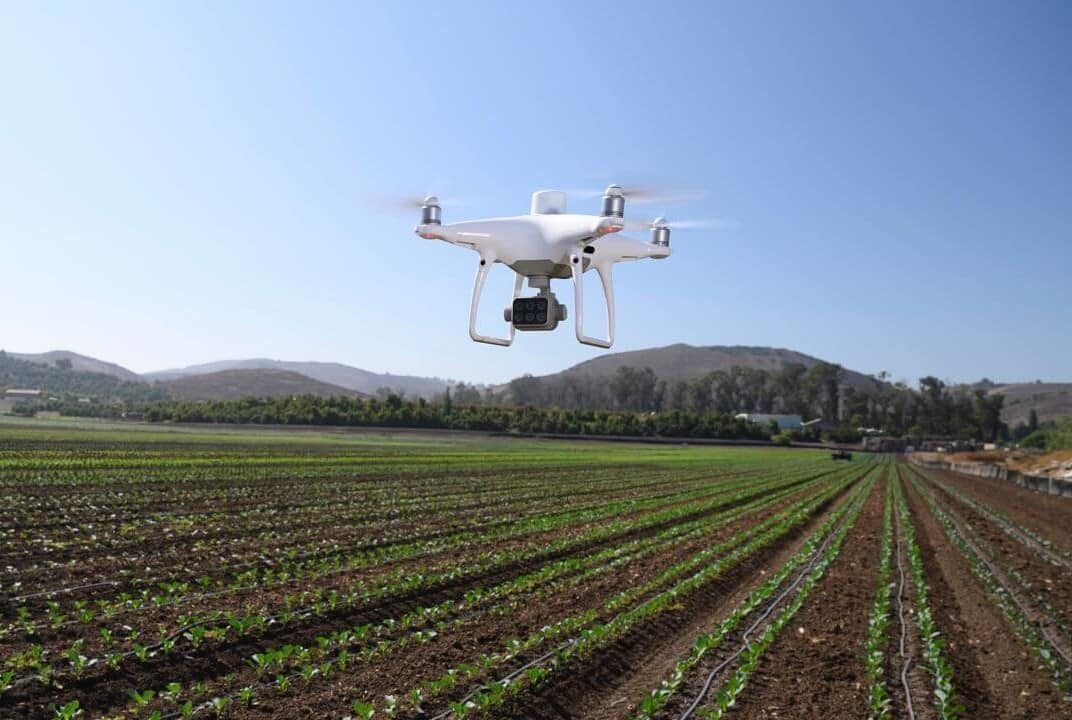
SEE BENEATH THE SURFACE
Agricultural image collection is now simpler and more efficient than ever, with a stabilised and integrated imaging system that allows access to information collected by 1 RGB camera and 5 multispectral cameras covering the Blue (B), Green (G), Red (R), RedEdge and Near Infrared (NIR) bands, all with 2MP, on a 3-axis stabilised gimbal.
MEANINGFUL DATA AT YOUR DISPOSAL
Having only aerial imagery is not enough for agricultural professionals. Switch between viewing normalised difference vegetation index (NDVI) analysis and real-time optical or RGB cameras. Immediately visualise where more attention is needed, make assertive and quick treatment decisions.
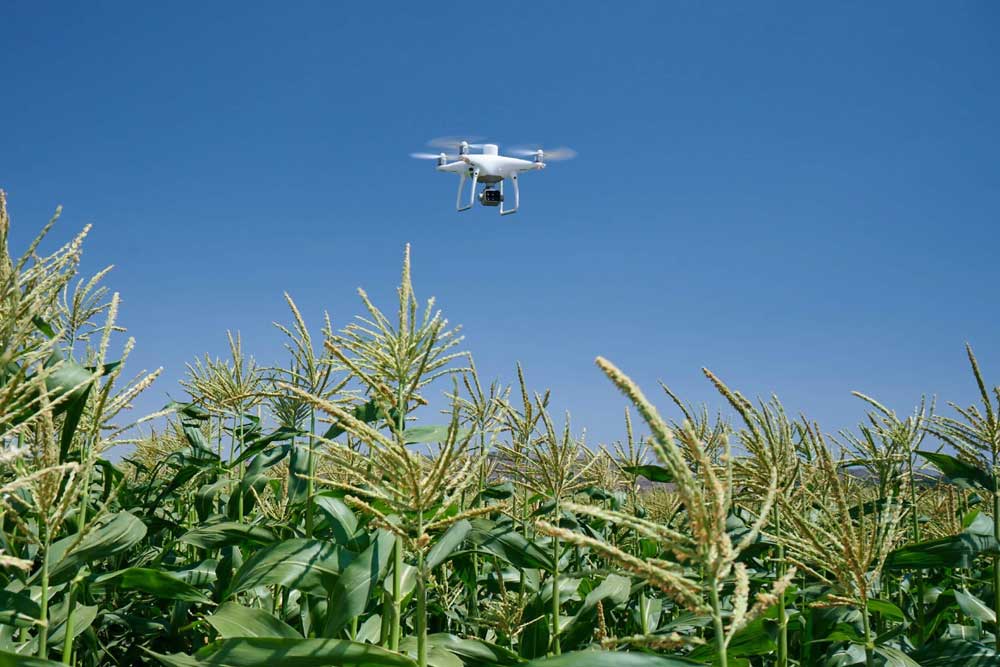
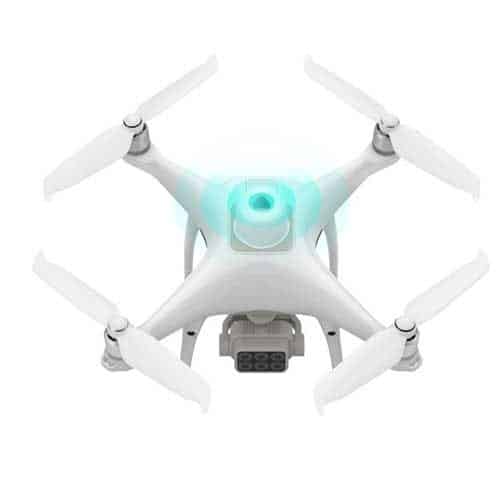
INTEGRATED SPECTRAL SUNLIGHT SENSOR
The P4M has an integrated spectral sunlight sensor on top to capture solar radiation, maximising the accuracy and consistency of the data captured.
D-RTK 2 MOBILE STATION AND NTRIP COMPATIBILITY
Increase RTK positioning accuracy without an internet connection by connecting the P4M to the D-RTK 2 high-accuracy GNSS mobile station. It is also possible with an internet connection to connect to NTRIP 2 (RTCM transport network via Internet Protocol), or even store satellite observation data to be used for post-processed kinematics (PPK).

ACCESSORIES
Stay on mission longer with commercial accessories
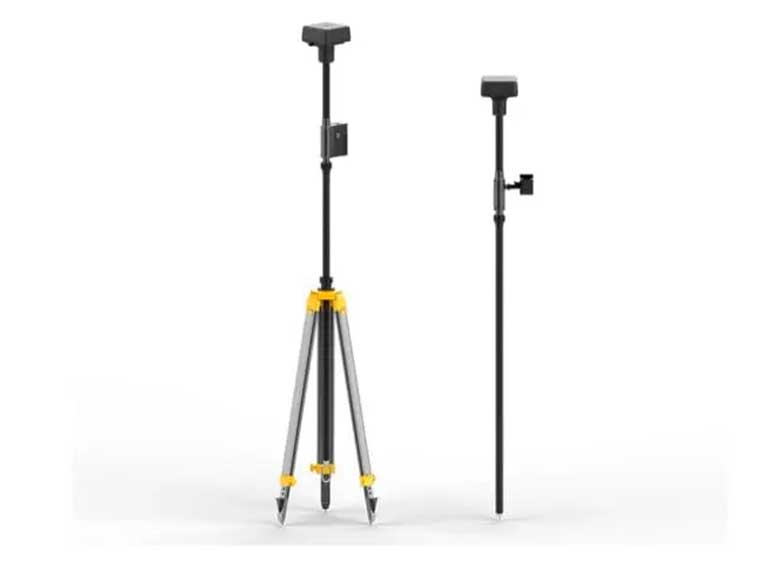
DJI D-RTK 2 High Precision GNSS Mobile Station
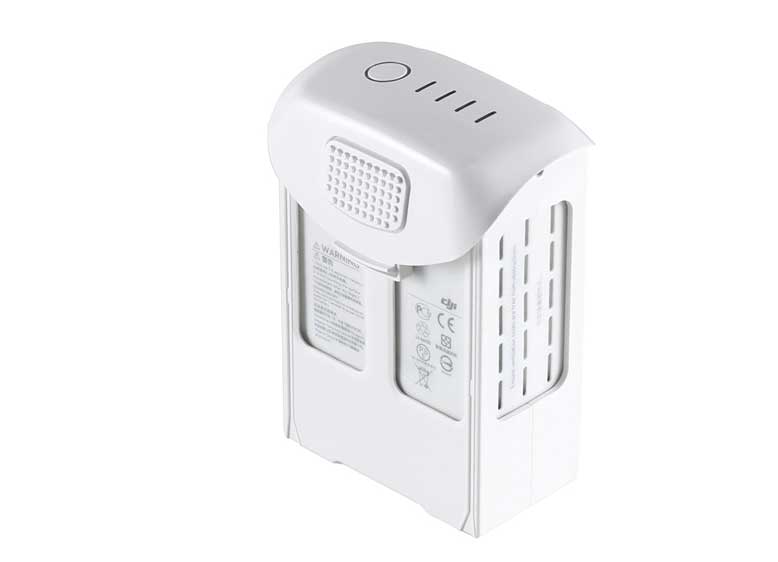
DJI PHANTOM 4 PRO BATTERY
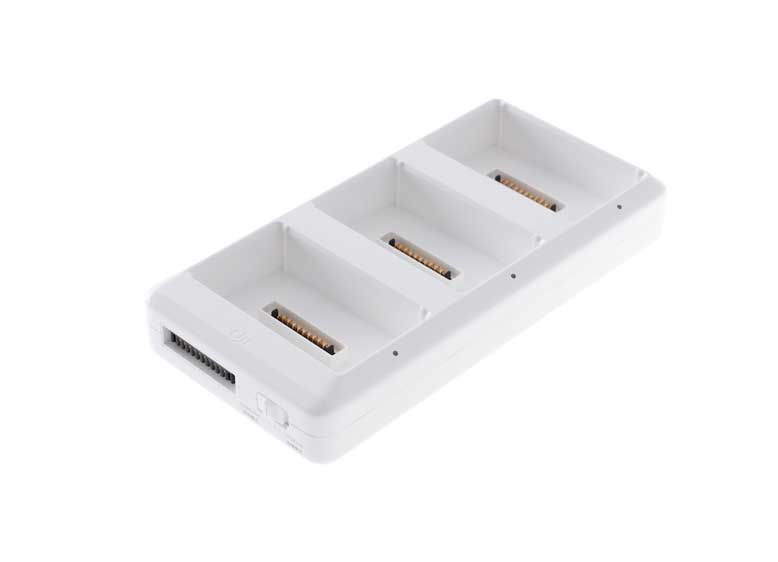
DJI PHANTOM 4 CHARGING HUB
FREQUENT QUESTIONS
PRODUCT
Product Frequently Asked Questions
What is the difference between the P4 Multispectral and the Phantom 4 RTK?
Both are RTK-capable drone platforms. The main difference is the camera. The P4 Multispectral includes an RGB camera and five 2 MP cameras each forming a multispectral array. The Phantom 4 RTK includes a single 20 MP RGB camera.
What propellers does the P4 Multispectral use?
It uses the 9455S noise reduction propellers. It is also compatible with the Phantom 4 series propellers, but flight performance will be affected.
What precautions should I take with the sunlight sensor on top of the drone?
Keep it away from hard or sharp objects and to avoid scratches.
GIMBAL CAMERAS
Frequently Asked Questions about Stabilizer Cameras
What are the capabilities of the multispectral camera array of the P4 Multispectral?
The multispectral imaging system of the P4 Multispectral detects light emissivity of different objects, which is captured by each of the cameras and analyzed to calculate vegetation index values. A common index used in the agriculture and forestry industry for plant health is NDVI. Meanwhile, the spectral sunlight sensor atop the drone compensates for the sunlight received throughout different times of day, improving the consistency of the data captured over the same field of vegetation. This increases the consistency of the information captured in the same field.
What are the Multispectral Imaging Bands covered by the multispectral cameras of the P4 Multispectral?
Blue (B): 450 nm ± 16 nm, green (G): 560 nm ± 16 nm, red (R): 650 nm ± 16 nm, red edge (RE): 730 nm ± 16 nm, near-infrared (NIR): 840 nm ± 26 nm. Each Sensor: Effective pixels 2.08 MP (2.12 MP in total)
What is the focal length for each camera on the P4 Multispectral?
All the camera lenses have a focal length of 5.74 mm, and the 35 mm equivalent focal length is 40 mm.
How are the cameras radiometrically calibrated?
Your images go through radiometric calibration when you process them through the vegetation index features in DJI GS Pro and DJI Terra.
Have the cameras on the P4 Multispectral gone through image position compensation?
Yes. The positions of the centers of the six cameras’ CMOS relative to the phase center of the onboard D-RTK antenna have been calibrated and are recorded in the EXIF data of each image.
Have the cameras lenses gone through distortion correction?
The original images do not have the distortion corrected but during the production process the distortion of the camera lens has been measured. The measurement result is saved in all images.
Has any vignetting correction been performed on the cameras?
The vignetting in the original images is not corrected, but the parameters for this correction are recorded in each of the images.
Is the TimeSync feature available for all six cameras?
Yes.
Do I need to use a high-speed SD card for the cameras?
Yes. Please refer to the manual when choosing an SD card.
How is the consistency of information collected by multispectral arrays of cameras and sunlight sensors from different drones ensured?
All P4 Multispectral aircraft have undergone a standardized camera and sensor calibration process that minimizes differences between drones.
Which values are recorded in the pixels of the images, the DN values or the reflectance values?
DN values.
Remote Controller
Frequently Asked Questions about Stabilizer Cameras
Which remote controls is the P4 Multispectral compatible with?
At this time, the P4 Multispectral is compatible only with the Remote Control SDK included with the aircraft.
Can I use the remote controls of other Phantom 4 series aircraft to operate the P4 Multispectral?
You will be able to link the aircraft to other Phantom 4 series remote controls, but you will not be able to operate the P4 Multispectral if you are not using a compatible remote control. You can use the P4 Multispectral remote control with the Phantom 4 RTK, but not the other way around.
TRANSMISSION
Frequently Asked Questions about Transmission
What is the video transmission range of the P4 Multispectral?
FCC / NCC: 7 km; SRRC / CE / MIC / KCC: 5 km (No obstructions or interference)
At what resolution can the P4 Multispectral transmit video?
720p
BATTERY
Frequently Asked Questions about Batteries
Can I use the P4 Multispectral battery in the Phantom 4 RTK?
Yes.
How long is the battery life of the P4 Multispectral?
A new battery lasts approximately 27 minutes.
How long does it take to fully charge a P4 Multispectral battery?
Approximately 58 minutes.
SOFTWARE
Frequently asked questions about the software
?
How can I upgrade the P4 Multispectral?
Using DJI Assistant 2 for Phantom. Follow these instructions www.dji.com/es/downloads/softwares/assistant-dji-2-for-phantom and those in the user’s manual.
What field survey and inspection applications are available for remote control?
The flight application included with the DJI GS Pro aircraft can be used to plan and execute flight missions.
What map does the P4 Multispectral application use?
DJI GS Pro uses Apple Maps.
Is there a limit to the number of benchmarks that can be used on each flight?
The number of landmarks that can be set in a mission is not limited, but actions can only be performed on 99 of them. When performing a mission with more than 99 waypoints, DJI GS Pro will automatically divide the mission into sections with a maximum of 99 waypoints each.
What are the altitude and speed limits?
Flying altitude: Maximum: 500 m Minimum: 1 m Flight speed: Maximum: 15 m/s Minimum: 1 m/s
Which flight mode should I use if I want to switch live between RGB and NDVI display?
You can switch between the two live in Manual mode. Recomendamos permanecer en la vista RGB y no cambiar el modo de visualización durante una misión de vuelo. JPEG images will be automatically saved in RGB or NDVI depending on the camera mode. Most third-party mapping software requires RGB imagery for aerial triangulation prior to compositing NDVI maps.
Which camera configuration is recommended?
For novice users, we recommend choosing the multispectral recording mode in Auto, Average Metering as the metering mode and unlocking AE.
Is the P4 Multispectral compatible with third-party software?
It will soon be compatible with software developed with the DJI Mobile SDK.
Which vegetation indices are supported by DJI Terra?
NDVI, GNDVI, NDRE, LCI, OSAVI. But it does not have a vegetation index calculation function.
APPLICATION
Frequently Asked Questions about Application
For what types of crops can information be collected with the P4 Multispectral?
Multispectral data captured with the P4 Multispectral can be used for various crops or vegetation types. Use DJI Terra or third-party software to reconstruct vegetation index maps such as NDVI or NDRE to monitor plant health.
Can I establish a flight path to perform periodic inspections with the P4 Multispectral?
Yes, you can plan flight missions and execute them multiple times with DJI GS Pro.
Can I reproduce maps with third-party software?
Yes.
How can I calculate the appropriate flight altitude based on a certain ground pixel size (GSD)?
The GSD of the P4 Multispectral is (H/18.9) cm per pixel. You can calculate the altitude of your flight mission according to the precision you need.
What is the maximum area that can be mapped in a single flight?
The maximum area that can be mapped in a single flight is approximately 0.47 km². This area is reached at an altitude of 180 m, with a GSD of approximately 9.52 cm/pixel.
Do the photos captured at the benchmarks include altitude information?
Relative altitude information (with respect to the takeoff point) is included in the photos captured at the reference points.
Is the P4 Multispectral compatible with third-party base stations?
No, you cannot connect third-party base stations to the Phantom 4 RTK or remote control via a radio station. However, you can get the data from an RTK server on a Wi-Fi or 4G network with the NTRIP protocol. Users can store satellite data in the aircraft to perform kinematic post-processing (PPK) to complete their tasks.
What is included in Phantom 4 Multispectral?
1 x Multispectral Drone Phantom 4
1 x remote control (without display)
4 x pairs of propellers
2 x high capacity smart batteries
1 x battery charger
1 x power cable
1 x gimbal protection
1 x charging hub
1 x micro SD card
1 x quick start guide
1 x USB cable
1 x Carrying case (Styrofoam type)
* D-RTK 2 Base can be purchased together or separately.
SPECS
Access to technical specifications
AIRCRAFT
| Take-off weight | 1487g |
| Distancia diagonal (Hélices excluidas) | 350 mm |
|
Max Service Ceiling Above Sea Level |
6000 m (19685 feet) |
|
Max. speed in ascent |
6 m/s (automatic flight);5 m/s (manual control) |
|
Max. speed in descent
|
3 m/s |
|
Max Speed
|
50 km/h (31 mph) (P mode)58 km/h (36 mph) (A mode) |
|
Max. flight time
|
Aprox. 27 minutes |
|
Operating temperature
|
From 0 a 40 °C (de 32 a 104 °F) |
|
Operating Frequency
|
From 2.4000 GHz to 2.4835 GHz (Europe, Japan, Korea)From 5.725 GHz to 5.850 GHz (Other regions)[1]. |
|
Transmission Power (EIRP)
|
2.4 GHz: < 20 dBm (CE / MIC / KCC)5.8 GHz: < 26 dBm (FCC / SRRC / NCC) |
|
Accuracy range of hovering flight
|
RTK on and running:Vertical: ±0.1 m; Horizontal: ±0.1 mRTK off:Vertical: ±0.1 m (With visual positioning); ±0.5 m (With GNSS positioning)Horizontal: ±0.3 m (With visual positioning); ±1.5 m (With GNSS positioning) |
|
Image position compensation |
The relative positions of the centers of the CMOS sensors of the six cameras and the phase center of the on-board D-RTK antenna have been calibrated and are included in the EXIF information in each image. calibrated and are recorded in the EXIF data of each image. |
MAPPING FUNCTIONS
| Soil Sampling Distance (GSD) |
(H/18.9) cm/pixel, H indicates the altitude of the aircraft in relation to the area to be mapped (unit: m).
|
| Data collection speed |
Maximum operating area of 0.63 km2 for a single flight at an altitude of 180 m, e.g., the GSD is approximately 9.52 cm/pixel, with a vertical overlap ratio of 80% and a lateral overlap ratio of 60%. During this flight, the battery will be discharged from 100% to 30%.
|
GNSS
| High-sensitivity, single-frequency GNSS |
GPS + BeiDou + Galileo[2] (Asia); GPS + GLONASS + Galileo[2] (other regions)
|
| Multi-frequency multi-system RTK high precision GNSS |
Frequency used: GPS: L1/L2; GLONASS: L1/L2; BeiDou: B1/B2; Galileo[2]: E1/E5 Fixed first hour: < 50 s Positioning accuracy: Vertical 1.5 cm + 1 ppm (RMS); Horizontal 1 cm + 1 ppm (RMS). 1 ppm indicates an increase in error of 1 mm in a 1 km movement. Speed accuracy: 0.03 m/s
|
Gimbal
|
Controllable Range
|
Tilt: -90° a +30°
|
VISION SYSTEM
|
Speed range
|
≤ 50 km/h (31 mph) at 2 m (6.6 ft) from the ground with adequate illumination.
|
|
Altitude range
|
0 – 10 m (0 – 33 feets)
|
|
Operating range
|
0 – 10 m (0 – 33 feets)
|
|
Obstacle detection range
|
0.7 -30 m (2 – 98 pies)
|
|
Operating Environment
|
Well-patterned surfaces and adequate lighting (> 15 lux)
|
| Global electronic shutter | 1/100 – 1/20000 s (visible spectrum); 1/100 – 1/10000 s (multispectral) |
CAMERA
| Sensors | Six 1/2.9″ CMOS sensors, including one RGB sensor for the visible spectrum and five monochrome sensors for multispectral imaging Each sensor: Effective pixels 2.08 MP (Total pixels: 2.12 MP) |
| Filters | Blue (B): 450 nm ± 16 nm;Green (G): 560 nm ± 16 nm;Red (R): 650 nm ± 16 nm;Red Edge (RE): 730 nm ± 16 nm;Near Infrared (NIR): 840 nm ± 26 nm |
| Lens | Field of view: 62.7°Focal length: 5.74 mm (35 mm format equivalent: 40 mm), autofocus set to ∞Aperture: f/2.2 |
| RGB sensor ISO range | 200 – 800 |
| Monochrome sensor gain | 1 – 8x |
| Global electronic shutter | 1/100 – 1/10000 s |
| Max Image Size | 1600×1300 (4:3.25) |
| Photo Format | JPEG (visible spectrum images) + TIFF (multispectral images) |
| Supported file systems | FAT32 (≤32 GB); exFAT (>32 GB) |
| Supported SD cards | MicroSD with a write speed of 15 MB/s.Max capacity: 128 GB.Class 10 or UHS-1 rating required. |
| Operating temperature | From 0 a 40 °C (de 32 a 104 °F) |
Remote Controller
| Operating Frequency | From 2.4000 GHz to 2.4835 GHz (Europe, Japan, Korea)From 5.725 GHz to 5.850 GHz (Other regions)[1]. |
| Transmission Power (EIRP) | 2.4 GHz: < 20 dBm (CE / MIC / KCC)5.8 GHz: < 26 dBm (FCC / SRRC / NCC) |
| Max. Transmission Distance | FCC/NCC: 7 km (4.3 miles);CE/MIC/KCC/SRRC: 5 km (3.1 miles) (Unobstructed, interference-free) |
| Built-in Battery | 6000 mAh LiPo 2S |
| Operating current and voltage | 1.2 A a 7.4 V |
| Support for mobile device | Tablets and smartphones |
| Operating temperature | From 0 a 40 °C (de 32 a 104 °F) |
INTELLIGENT BATTERY FOR FLIGHT
| Capacity | 5870 mAh |
| Voltage | 15.2 V |
| Battery Type | LiPo 4S |
| Energy | 89.2 Wh |
| Net weight | 468 g |
| Operating temperature | From -10 a 40 °C (from 14 to 104 °F) |
| Charging time | From 5 to 40 °C (from 41 to 104 °F) |
| Max. load power | 160 W |
Intelligent Flight Battery Charging Port (PHANTOM 4 BATTERY CHARGE PORT)
| Voltage | 17,5 V |
| Operating temperature | 5° a 40℃ |
POWER ADAPTER (PH4C160)
| Voltage | 17.4 V |
| Power rating | 160 W |
Notes
[1] En conformidad con la normativa local, esta frecuencia no estará disponible en algunas regiones.
[2] Soon compatible with Galileo







